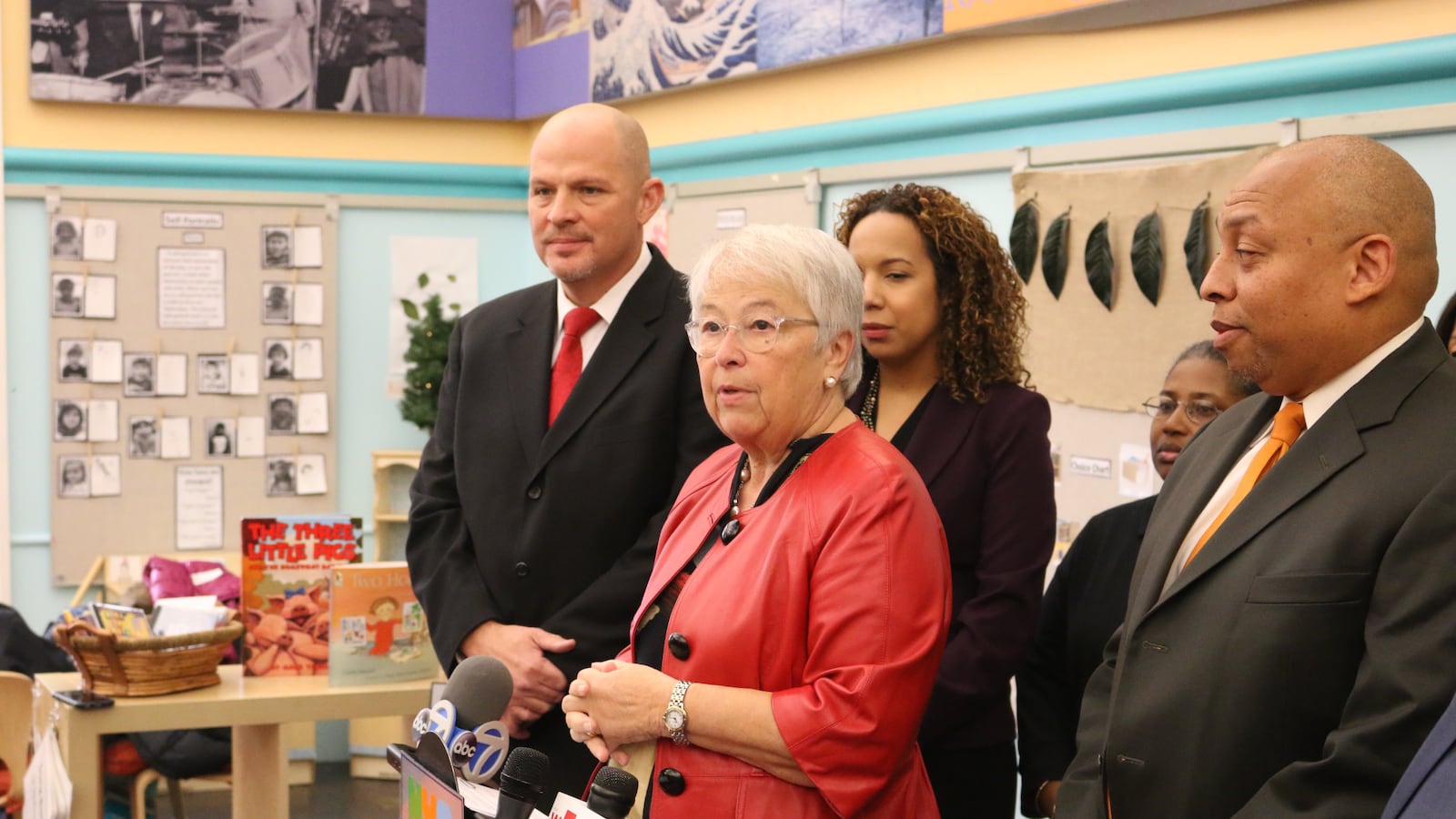New York City teachers may soon be rated based in part on collections of their students’ work, under a deal struck by the city that continues a shift away from using multiple-choice tests to judge teachers.
The announcement answers a big question raised last year when New York policymakers banned the use of grades 3-8 math and English state tests in teacher evaluations: What should replace those scores?
Districts across the state were on the hook to come up with an answer by the end of 2016. On Wednesday, schools Chancellor Carmen Fariña and leaders of the city’s teachers and principals unions said they had agreed on new options which would provide more “authentic” measures of learning, including city-created tests in a variety of new subjects, lengthier projects, and “student learning inventories,” or compilations of student work.
“The best evaluation tool is the work that students do day-to-day in the classroom,” Fariña said. “Sometimes it’s not the end product that matters but the process to get there.”
That’s a significant shift from what city officials were saying in 2010, when they were battling over the use of test scores in teacher ratings for the first time. Spurred by Gov. Andrew Cuomo and the prospect of extra money from the Obama administration, lawmakers had overhauled the state’s evaluation law to require teachers be rated in part based on how much their students’ test scores went up — then left many details up to districts and their local teachers unions.
Then-Mayor Michael Bloomberg wanted to make sure the new evaluations would lead to low-scoring teachers losing their jobs, while the United Federation of Teachers argued that test scores aren’t a useful measure of student learning. A multiyear showdown between the union and the city followed.
The evaluations have seen many rounds of changes in the years since, but few teachers were ever removed because of their low ratings. Meanwhile, anti-testing sentiment has grown, and Cuomo’s 2015 push for a teacher evaluation law increasing the weight of state standardized tests in evaluations helped inspire a testing boycott movement — and a moratorium on the use of those exams.
The new evaluation scheme will go into effect this school year, officials said Wednesday, if it receives state approval. It will likely be in place for the next three years.
Under the new plan, the other main ingredient in New York City teacher ratings, classroom observations, will not change see big changes, union officials said.
A new legal requirement that some observations be conducted by outsiders, not school administrators, was supposed to kick in this spring. But after districts including New York City complained about the burden, the Board of Regents decided to offer waivers from the requirement. New York City plans to apply for one, officials said.
Schools will also continue to be able to choose from a menu of tests for deciding how to evaluate teachers. Some of the options will remain in place, like the “Measures of Student Learning” created by city teachers in recent years that consist of essay prompts or performance-based exams. The new option to present portfolios of student work would include assignments coming from teachers and others created centrally by the Department of Education.
Advocacy groups that have fought for evaluation systems that identify more low-performing teachers and remove them from schools immediately criticized the new system. Jenny Sedlis, executive director of StudentsFirstNY, called it “Mayor de Blasio’s scheme to rate every teacher effective.”
But there was little tension between union and city officials, who stood side by side and presented a coordinated message Wednesday morning.
“This is the first time where I can stand here before you and say we are moving in a better direction,” teachers union chief Michael Mulgrew said.

